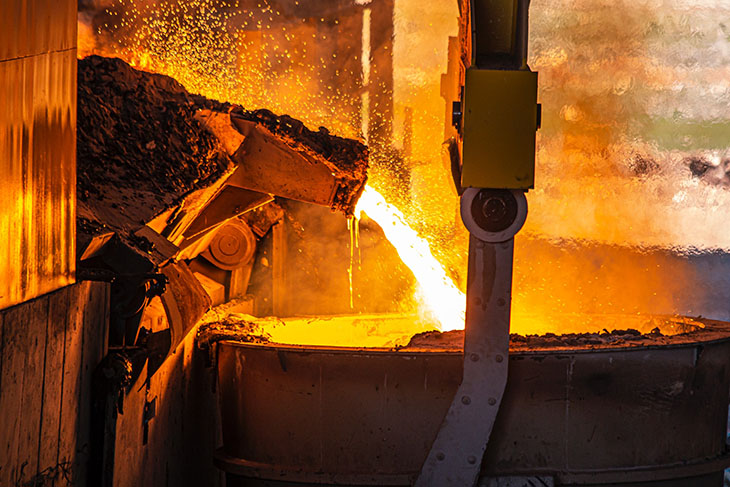Aluminum is a key component in many manufacturing processes, from cars to cans. The metal has retained that popularity for decades, but the market is starting to shift. Green aluminum is becoming an increasingly popular alternative to conventional ways of producing this critical resource.
Compared to some other materials, aluminum is already relatively green. However, as sustainability initiatives rise, its potential to become even more eco-friendly has become more evident. As these trends continue, greener aluminum could become the new standard in manufacturing.
What Is Green Aluminum?
The “green” in “green aluminum” comes from reducing carbon emissions in the production process. There’s currently no comprehensive standard dictating how low-carbon these metals must be to carry the “green” label, so specifics can vary by manufacturer. However, the environmental nonprofit Carbon Trust suggests labeling aluminum as “green” if it emits four metric tons or less of CO2 per metric ton of metal.
Foundries can achieve this through several means. One of the most common is to power smelters through renewable energy like hydropower, solar or wind energy. Alternatively, some facilities focus on using passive smelter anodes that use less electricity overall. Combining these technologies may yield the most significant carbon reductions.
Carbon offsets also typically play a role in green foundries. If a facility can’t feasibly power its operations with in-house renewables, it can invest in renewable energy elsewhere, earning carbon credits to offset its emissions.
Behind the Push for Green Aluminum
Over the past few years, green aluminum has seen a considerable uptick in adoption and interest. This push comes from several independent but related factors, namely, rising aluminum demand, vast potential for carbon reduction and growing pressure for overall sustainability.
Aluminum Demands Are Rising
One of the most straightforward reasons behind green aluminum’s growth is the growing demand for aluminum as a whole. Experts predict global demand for the metal to grow by 40% by 2030, requiring an additional 33.3 million tons of annual production.
Much of this demand comes from rising investment in sustainable technologies. As a lighter metal than steel, aluminum helps reduce fuel consumption in vehicles and enables more efficient electric cars. It’s also a key component in solar panels and easier to recycle than other popular metals.
Low-carbon smelting methods will help satisfy this rising demand without creating a significant jump in greenhouse gas emissions. Because much of this growth comes from the shift toward sustainability, it makes more sense to address it with a greener alternative.
Aluminum Has High Green Potential
While aluminum’s recyclability and role in green technologies make it important to sustainability, it has considerable room for improvement. Coal power still accounts for 50% of aluminum production, and the metal has a comparatively energy-intensive production and refinement process. Consequently, as aluminum demand grows, more attention falls on these shortcomings, encouraging a shift.
Green aluminum also holds promise because, despite much aluminum being carbon-intensive, it’s relatively easy to make it more sustainable. Because aluminum is highly recyclable, it’s easier to make using scrap material than other metals. That recyclability opens more options for going green, helping reduce mining-related emissions in addition to direct emissions from smelting.
Renewable energy is also becoming increasingly viable. Renewables are the most affordable energy source in many areas, saving the world $55 billion in power generation costs in 2022 alone. That affordability can enable faster ROIs for green aluminum processes, encouraging more foundries to switch.
Pressure to Go Green Is Increasing
Finally, pressure is mounting for manufacturers to embrace sustainability, regardless of the specifics. Only two-thirds of small and medium businesses have implemented any sustainable initiatives, despite almost all recognizing their importance. As environmental regulations become more common, that could threaten many companies.
With many governments setting net-zero emissions goals, manufacturers will have to reduce their carbon footprints quickly. Switching to more sustainable resources like green aluminum is an important part of that shift.
Embracing green processes and materials will also help manufacturers appeal to today’s increasingly eco-conscious consumers. Because aluminum is so common across such a wide range of products, making this metal more sustainable will yield particularly significant benefits.
Recent Developments and the Future of Green Aluminum
As these three trends push the demand for green aluminum, more manufacturers are embracing it. Yamaha recently announced it will use aluminum with a 60% smaller carbon footprint in its motorcycles. This shift is part of the company’s initiative to achieve carbon neutrality by 2050, in line with many nations’ environmental goals.
Similarly, the BMW Group will use 100% renewable-powered aluminum casting for its wheels in vehicles released in 2024 onward. The move will save an estimated 500,000 metric tons of CO2 emissions annually. Apple, Nissan and Dell are other leading consumer product companies embracing low-carbon aluminum.
As more of these large companies in the public eye increase their green aluminum adoption, demand for the low-carbon metal will increase. Customers and stakeholders will push for more sustainable initiatives, driving the adoption of these low-emissions processes.
Manufacturers Must Capitalize on Green Aluminum
Green aluminum is a relatively new phenomenon, but it’s growing quickly. Manufacturers that want to increase their sustainability or remain competitive in a greener market must take advantage of this trend early. Embracing greener aluminum today can ensure more success tomorrow.

























